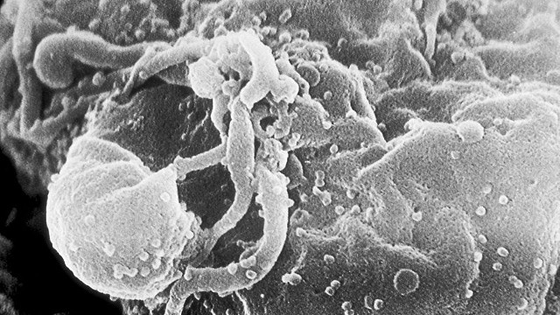First a baby, now 14 ADULTS “fuctionally cured” of HIV. Awesomeness and caveats.
This is righteous news. A total of 15 people have been confirmed as being “functionally cured” of HIV. There is a bit of a winding road that leads to both what constitutes their cures and how it is done, but the news is generally pretty awesome.
io9:
Earlier this month, doctors announced that a baby had been cured of an HIV infection. Now, using a similar technique, it appears that 14 adults have likewise been successfully treated for the disease. The trick, say the scientists, is to tackle the infection early.
The research was conducted by Asier Sáez-Cirión of the Pasteur Institute and his results now appear in the open source journal PLOS Pathogens. His team analyzed 70 people with HIV who had been treated by combination antiretroviral therapy(cART) just a short time after infection, a range spanning 35 days to 10 weeks. This is much sooner than people are normally treated. And in fact, these patients, called the Visconti Cohort, were all diagnosed with HIV early (and by chance) when they turned up at hospitals to be assessed for other conditions.
The cohort stuck to the antiretrovirals (ARVs) for an average of three years, during which time the drugs kept the virus in check (they do not eradicate HIV from the body). Eventually, all of the patients stopped taking the ARVs for various reasons (personal choice, different drug protocols, etc.).
Normally, HIV will return when patients stop taking their ARVs. But this time, something interesting happened. The authors of the study described it this way:
We identified 14 HIV patients (post-treatment controllers [PTCs]) whose viremia remained controlled for several years after the interruption of prolonged cART initiated during the primary infection.
That’s roughly one in ten of the patients, a group that included four women and 10 men. On average, they were off the medication for seven years.
It’s important to note that the patients still have the HIV infection. Also, they’re not “supercontrollers” (the <1% of people who are naturally resistant to HIV). But their bodies are able to keep it in check — and without the assistance of medication. Sáez-Cirión suspects that the early treatment limits the reservoir of HIV that can persist, limits the diversity of the virus, and it preserves the immune response to the virus that keeps it in check. That said, he’s not entirely sure why only a fraction of the patients were functionally cured.




